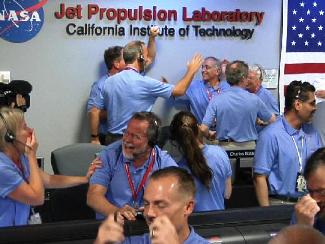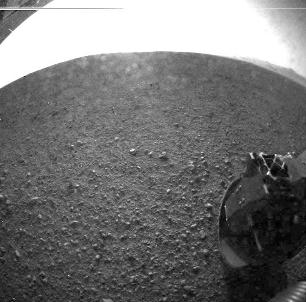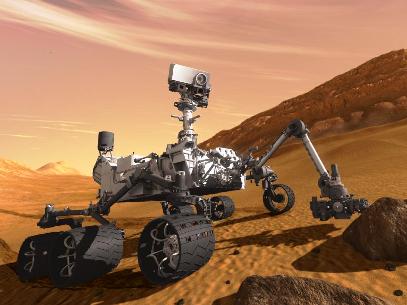PASADENA, Calif. - NASA's most advanced Mars rover Curiosity has landed on the Red Planet. The one-ton rover, hanging by ropes from a rocket backpack, touched down onto Mars Sunday to end a 36-week flight and begin a two-year investigation.
Clik here to view.

Cheers for Curiosity-Engineers at NASA's Jet Propulsion Laboratory in Pasadena, Calif., celebrate the landing of NASA's Curiosity rover on the Red Planet. The rover touched down on Mars the evening of Aug. 5 PDT (morning of Aug. 6 EDT). Image credit: NASA/JPL-Caltech
The Mars Science Laboratory (MSL) spacecraft that carried Curiosity succeeded in every step of the most complex landing ever attempted on Mars, including the final severing of the bridle cords and flyaway maneuver of the rocket backpack.
Clik here to view.

Curiosity's Surroundings-This is one of the first images taken by NASA's Curiosity rover, which landed on Mars the evening of Aug. 5 PDT (morning of Aug. 6 EDT). It was taken through a "fisheye" wide-angle lens on the left "eye" of a stereo pair of Hazard-Avoidance cameras on the left-rear side of the rover. The image is one-half of full resolution. The clear dust cover that protected the camera during landing has been sprung open. Part of the spring that released the dust cover can be seen at the bottom right, near the rover's wheel. On the top left, part of the rover's power supply is visible. As planned, the rover's early engineering images are lower resolution. Larger color images from other cameras are expected later in the week when the rover's mast, carrying high-resolution cameras, is deployed. Image credit: NASA/JPL-Caltech
About two hours after landing on Mars and beaming back its first image, NASA's Curiosity rover transmitted a higher-resolution image of its new Martian home, Gale Crater. Mission Control at NASA's Jet Propulsion Laboratory in Pasadena, Calif., received the image, taken by one of the vehicle's lower-fidelity, black-and-white Hazard Avoidance Cameras - or Hazcams.
Clik here to view.

Curiosity-This artist concept features NASA's Mars Science Laboratory Curiosity rover, a mobile robot for investigating Mars' past or present ability to sustain microbial life.
For more information on the mission, visit: http://www.nasa.gov/mars . Follow the mission on Facebook at: http://www.facebook.com/marscuriosity
